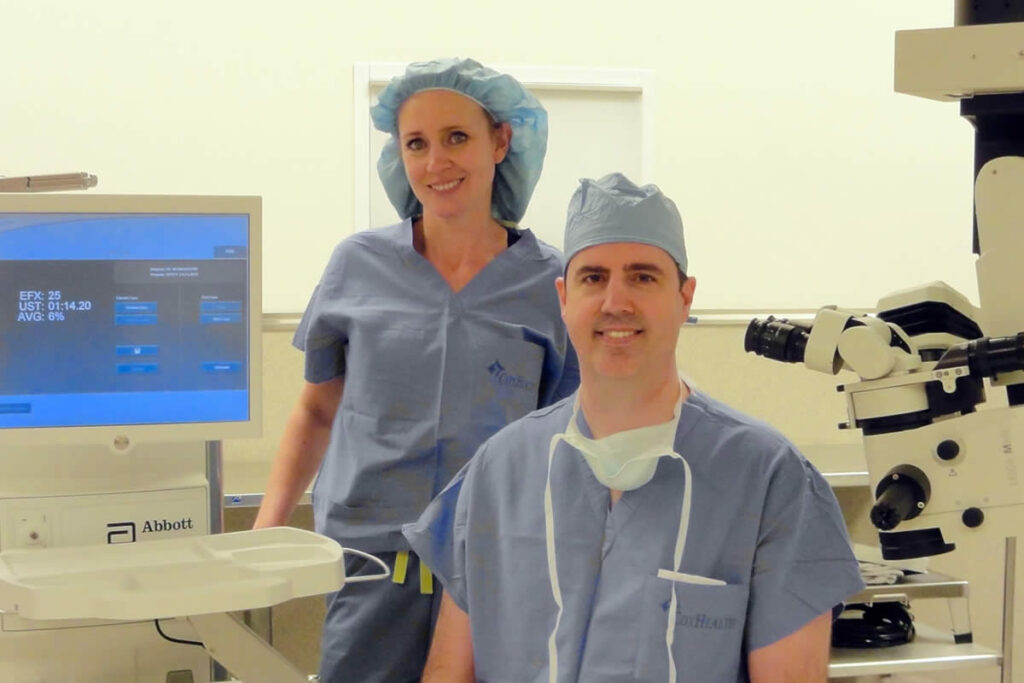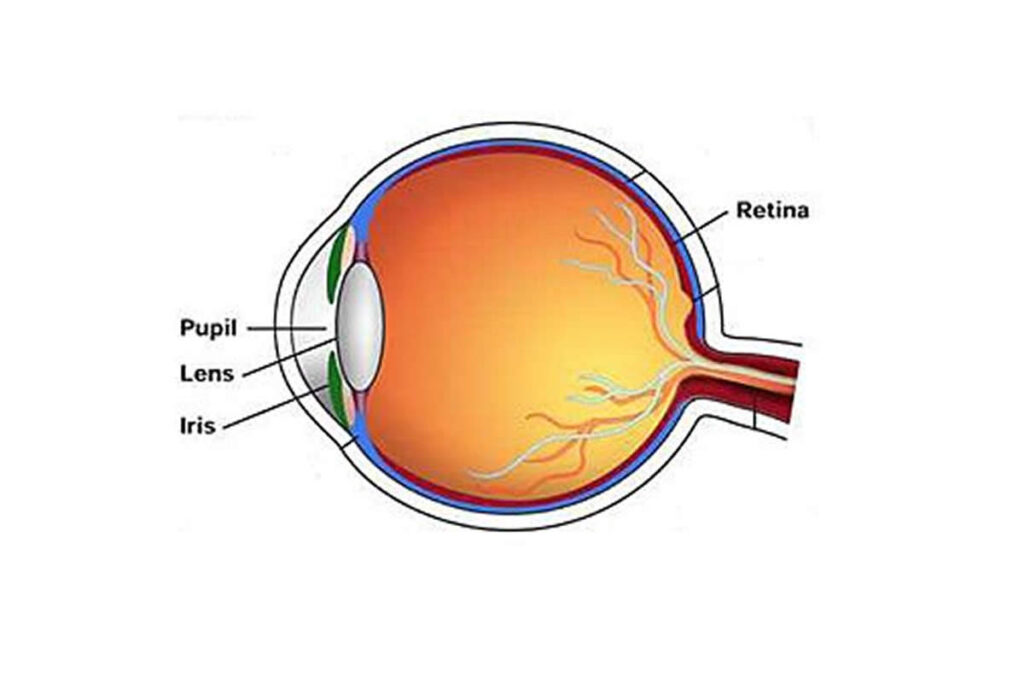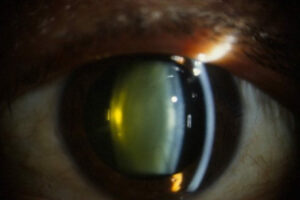Your Cataracts

Cataracts are a clouding of the natural lens inside your eye which causes your vision to gradually degrade. The only treatment is surgery, and cataract surgery is the most common procedure we perform. The surgery is typically performed at the outpatient CoxHealth Surgery Center. The cataract from one eye is removed first, and if necessary, the second one is removed a couple of weeks later.
For more detailed information from a trusted source, please follow this link: https://www.aao.org/eye-health/diseases/what-are-cataracts.
Two Types Of Cataracts

It was football’s colorful coach Bum Phillips who famously said, “There’s just two types of coaches…them that’s been fired and them that’s gonna be.” When it comes to cataracts, something similar could be said, with only a slight twist. There’s just two types of cataracts…them that’s been removed, and them that’s gonna be. While neither quip is completely accurate, they both convey a truth. For most of us, it is simply a matter of time before we are faced with the need for cataract surgery. In fact, over 20 million Americans over age 40 are affected by cataracts, and those numbers continue to climb as our population ages.
A cataract is simply a cloudy lens inside the eye. The lens sits behind the pupil and focuses the light that passes through it. There are multiple types of cataracts, and they can affect people of any age, even newborn babies. Some cataracts are the result of steroid use or radiation. These typically cause a frosted glass appearance on the backside of the lens and can progress within a matter of months. Other cataracts are associated with systemic diseases, medications, or injuries. They can appear blue, white, or resemble Christmas tree lights or bicycle spokes.
The vast majority of cataracts, however, are simply part of the normal aging process. Like wrinkles, given enough birthdays, everybody will earn them. The difference is that wrinkles affect how you look, and cataracts affect how you see. The natural lens in your eye adds layers like an onion from birth, and eventually the material in the center becomes denser and turns amber-colored. These age related, or “nuclear sclerotic”, cataracts are not a disease in the same sense as macular degeneration or glaucoma, but are simply a part of being human. If you are fortunate to live long enough, they will need to be removed to restore clear vision. Most people will have the first signs of cataracts on their eye exam in their 50’s or 60’s, and will choose to have their cataracts removed in their 70’s or 80’s.

Many people wonder if there are any drops or pills that can get rid of their cataracts. While it would be convenient to simply put in an eye drop and have your cataracts melt away, surgery is still the only treatment available. Any drops that are marketed as a cure for cataracts will be sure to disappoint. Others wonder whether cataracts can be prevented. It is likely that limiting excessive exposure to ultraviolet light and avoiding smoking will help, but ultimately these lifestyle changes only slow down cataract progression. Likewise, the largest U.S. studies of vitamins have shown very limited or no significant benefit in cataract prevention.
Regardless of the cause, cataracts eventually cause visual symptoms. Often, the first symptoms people notice are difficulty driving at night or in the rain. Sometimes, they notice glare and halos around streetlights as they drive. They also may need more light to read and have trouble distinguishing shades of gray or subtle differences in color. As the cataracts mature, they cause a general haze or blurriness of the vision. Eventually they can cause blindness, and they are the leading cause of blindness in the world. In the United States, however, it is much less common for cataracts to progress to blindness because of earlier surgical intervention.
Just because you have a cataract does not mean you should rush to surgery. The decision regarding when to perform surgery is based on several criteria and a careful weighing of the risks and benefits. In generations past, doctors would recommend waiting until a cataract was “ripe” because the technique of the era was aided by a more dense lens. As instrumentation and techniques have evolved, a “ripe” or dense cataract no longer provides the same surgical advantage. The three main criteria used to decide when it is time for surgery are: 1) the vision measured on the eye chart, 2) the appearance of the lens and health of the eye under microscopic ophthalmic examination, and 3) the patient’s perception that their life is being significantly hampered. All three criteria should be met and the risk of surgery weighed against the benefit. The risk of surgical complication is relatively low, with about 95% of patients experiencing successful surgery and a smooth recovery and only about 1% of patients experiencing severe vision loss that cannot be improved.

Modern cataract surgery is performed in an outpatient setting under local anesthetic. Because the cataract is inside the eye, rather than on the eye surface, it cannot be removed by “peeling” it off the surface. Instead, an incision less than 1/8 inch is created, and the cataract is broken up into small pieces and removed. An artificial lens is routinely implanted through the incision, and typically no stitches are required. Recovery time is usually short, with the vision restored and the eye stable in a matter of weeks.
One silver lining to the dark cloud of cataracts is that each eye can only have one, and once it is gone, it never returns. Sometimes a hazy capsule can develop around the artificial lens after cataract surgery, and this can be incorrectly termed a second cataract, but it is quite different. Clearing this hazy capsule is much simpler than the original surgery and can be performed in the office with a laser.
Whether your cataracts “have been removed or are gonna be”, having a complete quality ophthalmic exam is the best way to ensure healthy eyes. If you are over 60 years of age, have a significant history of eye problems, or a strong family history of eye problems, it is a good idea to have your eyes checked every year by your ophthalmologist. For those under the age of 60 with no history of eye problems, an ophthalmic exam every one to two years is appropriate. Regardless of your age or vision status, caring for your eyes is always worth the effort.
